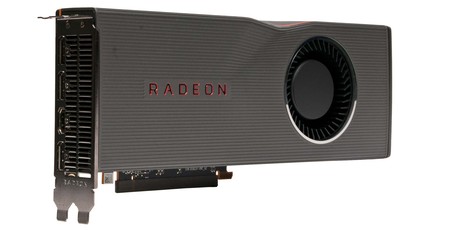
Manufacturer: AMD
UK price (as reviewed): MSRP £379.99 (inc. VAT)
US price (as reviewed): MSRP $399.99 (exc. tax)
What a week it’s been... Things were already looking decidedly busy this week as the industry readied itself for today’s simultaneous launch of AMD’s Navi GPUs, 3rd Gen Ryzen CPUs, and X570 motherboards (and PCIe 4.0 SSDs), but Nvidia piled on the workload by bringing forward its RTX 2060 Super and RTX 2070 Super launches in order to pre-empt Navi, steal headlines, and put pressure on AMD’s pricing. This seemingly worked, because AMD responded on Friday morning by telling the press that Navi’s original MSRPs were being lowered for launch.
As such, the new Radeon RX 5700 XT and Radeon RX 5700 are coming out today at $399 and $349 instead of $449 and $379 respectively. This pricing puts them directly in line with the MSRPs of RTX 2060 Super and RTX 2060 respectively, and the situation in the UK will reflect this with RX 5700 XT starting at £380 and RX 5700 at £330.
So, what do these new parts look like under the hood? A specs table will as ever help to contextualise them.
| AMD Radeon RX 5700 XT | AMD Radeon RX 5700 | AMD Radeon VII | AMD Radeon RX Vega 64 | AMD Radeon RX Vega 56 | |
|---|---|---|---|---|---|
| Architecture | RDNA | RDNA | GCN "5.1" | GCN 5th Gen | GCN 5th Gen |
| Codename | Navi 10 | Navi 10 | Vega 20 | Vega 10 | Vega 10 |
| Base GPU Clock | Up to 1,605MHz | Up to 1,465MHz | 1,400MHz | 1,274MHz | 1,156MHz |
| Game GPU Clock | Up to 1,755MHz | Up to 1,625MHz | N/A | N/A | N/A |
| Boost GPU Clock | Up to 1,905MHz | Up to 1,725MHz | 1,750MHz | 1,546MHz | 1,471MHz |
| Peak GPU Clock | N/A | N/A | 1,800MHz | 1,630MHz | 1,590MHz |
| Compute Units | 40 | 36 | 60 | 64 |
56 |
| Stream Processors | 2,560 | 2,304 | 3,840 | 4,096 | 3,584 |
| Texture Units | 160 | 144 | 240 | 256 | 224 |
| ROPs | 64 | 64 | 64 | 64 | 64 |
| Transistors | 10.3 billion | 10.3 billion | 13.2 billion | 12.5 billion | 12.5 billion |
| Die Size | 251mm2 | 251mm2 | 331mm2 | 495mm2 | 486mm2 |
| Process Node | 7nm | 7nm | 7nm | 14nm | 14nm |
| Memory | 8GB GDDR6 | 8GB GDDR6 | 16GB HBM2 | 8GB HBM2 | 8GB HBM2 |
| Memory Data Rate | 14Gbps | 14Gbps | 2Gbps | 1.89Gbps | 1.6Gbps |
| Memory Interface | 256-bit | 256-bit | 4096-bit | 2048-bit | 2048-bit |
| Memory Bandwidth | 448GB/s | 448GB/s | 1TB/s | 483.8GB/s | 409.6GB/s |
| Board Power | 225W | 185W | 300W | 295W | 210W |
Both new cards are based upon a brand new GPU, Navi 10, manufactured using TSMC’s 7nm process. With it, AMD is introducing its new RDNA architecture that spells an end to Graphics Core Next (GCN) that’s been with us since the Radeon HD 7900 series was introduced almost eight years ago. From mobile GPUs to high-end desktop and workstation (and next-gen consoles), RDNA will form the basis of AMD’s entire key graphics portfolio going forwards. The low-level changes it carries with it are discussed over the page, but the important messaging from AMD is a 1.25x increase in performance per clock and a 1.5x boost in performance per watt compared to 14nm GCN i.e. Vega 64.
The Navi 10 GPU comes fully enabled in the Radeon RX 5700 XT, outfitting it with 40 Compute Units for a total of 2,560 stream processors (closest equivalent to Nvidia’s CUDA Cores) and 160 texture units. You’ll notice that these are considerably fewer than Vega 64 (likewise with transistor count), but the Radeon RX 5700 XT is still expected to be the faster card despite also having a 70W lower TDP and a die size that has almost halved, which should give you some indication that the performance/efficiency advances outlined above are very real.
Navi 10 is a much more traditional GPU than Nvidia’s Turing RTX parts and do not include anything equivalent to the green team’s RT Cores used for accelerating real-time ray tracing workloads or its Tensor Cores used to accelerate AI-based workloads.
AMD has changed the way it presents and defines clock speeds with its Navi parts, choosing definitions that don’t bear a direct relationship to what’s programmed into the VBIOS but instead relate to expected use cases:
• Base Clock is what you can expect when running an extreme synthetic workload like Furmark
• Game Clock is the most important one and what you can expect as a minimum when running games
• Boost Clock is how high the card is expected to boost to during lighter workloads
AMD caveats the Base Clock and Game Clock by saying that they’re expected ‘under standard thermal and electrical conditions’, and Boost Clock ‘under favourable thermal and electrical conditions’. There is not actually a built-in boost limit anymore like there was previously (Peak Clock), and the dynamic power management system now makes use of much finer-grained clock steps and power states. In some cases, the published Boost Clock may even be exceeded, since the GPUs automatically utilise available thermal and electrical headroom in real-time and on a per-die basis. In short, AMD’s boosting behaviour just became more finely tuned, more opportunistic, and smarter.
While AMD has made clock speed headway with Navi versus Vega, this seems mainly down to the 7nm process given that the 7nm-based Radeon VII also did this to a similar degree. With more cores and higher clock speeds, it’s clear the 5700 XT is using the best Navi 10 dies out there, which is what you want from your flagship parts.
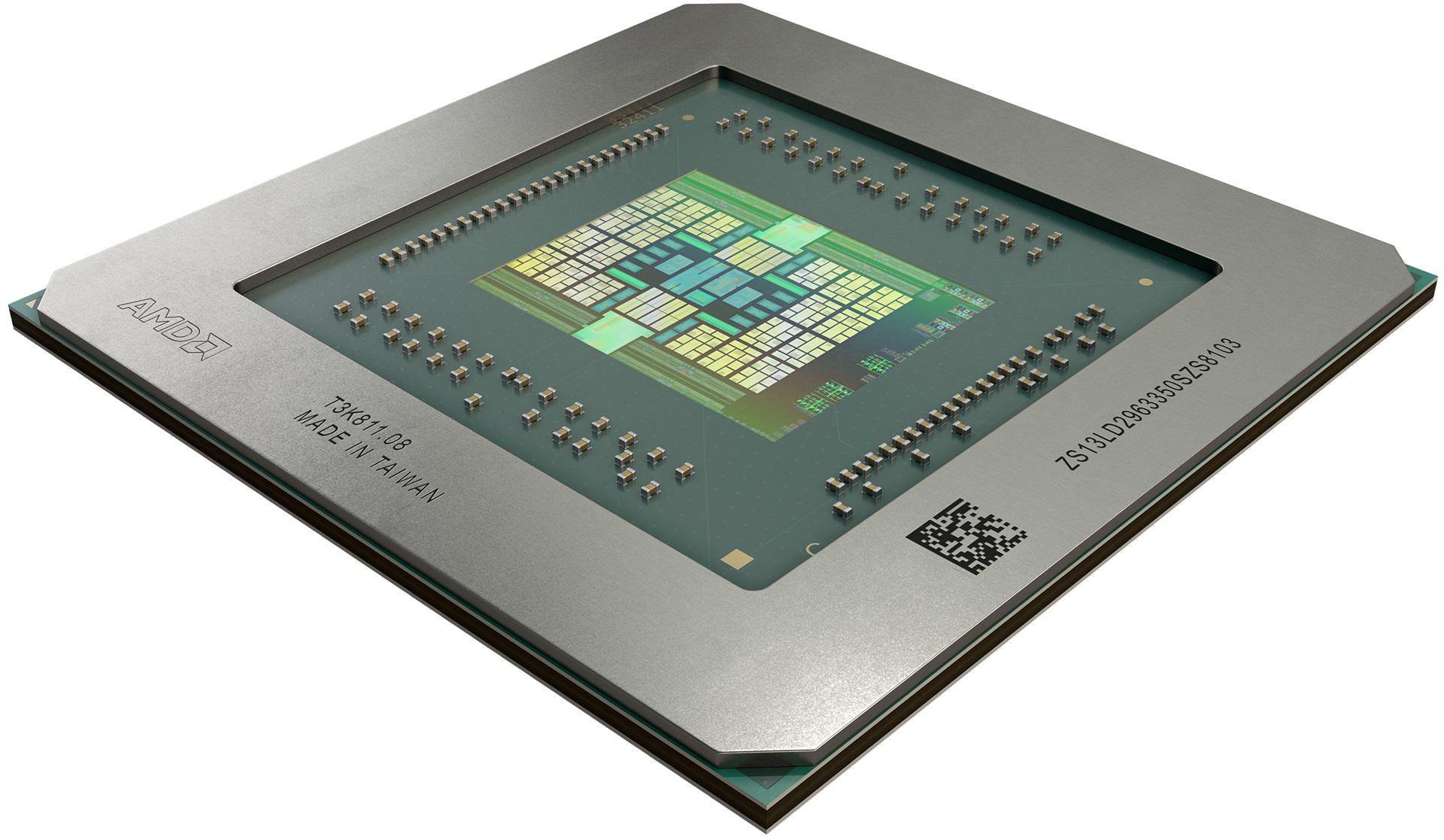
Looking at the back end, AMD continues to use 64 ROPs, but memory-wise things are very different to Vega 64 largely as a result of moving away from High Bandwidth Memory and back to GDDR, specifically GDDR6. AMD hasn’t really offered commentary on this, but it’s likely cost is a big factor. Running with 8GB in total across a 256-bit interface and a clock speed of 14Gbps, AMD has 448GB/s of total memory bandwidth available. On this front, it is an exact match for Nvidia’s new RTX 2060 Super and RTX 2070 Super cards (also RTX 2070, RTX 2080). Memory bandwidth is also slightly down relative to Vega 64 (by ~7.5 percent), but new compression techniques will work in Navi’s favour here.
Just like the Radeon RX 5700, the Radeon RX 5700 XT launches today in reference form only. Third-party cards do look like they will start appearing for pre-order as well, but availability is currently slated for August. As ever, the rumour mill running at full pace regarding other Navi GPUs and cards, but right now these are the only ones officially confirmed.
AMD is also making the Radeon RX 5700 XT 50th Anniversary card available exclusively through AMD.com for $449 (down from the originally-planned $499; UK pricing TBC). This features the same cooler design but with cosmetic tweaks that mainly involves replacing red sections with gold ones. The TDP increases by 10W to 235W, and the listed clock speeds increase by 75MHz – roughly a four percent overclock going by Game Clock.

MSI MPG Velox 100R Chassis Review
October 14 2021 | 15:04

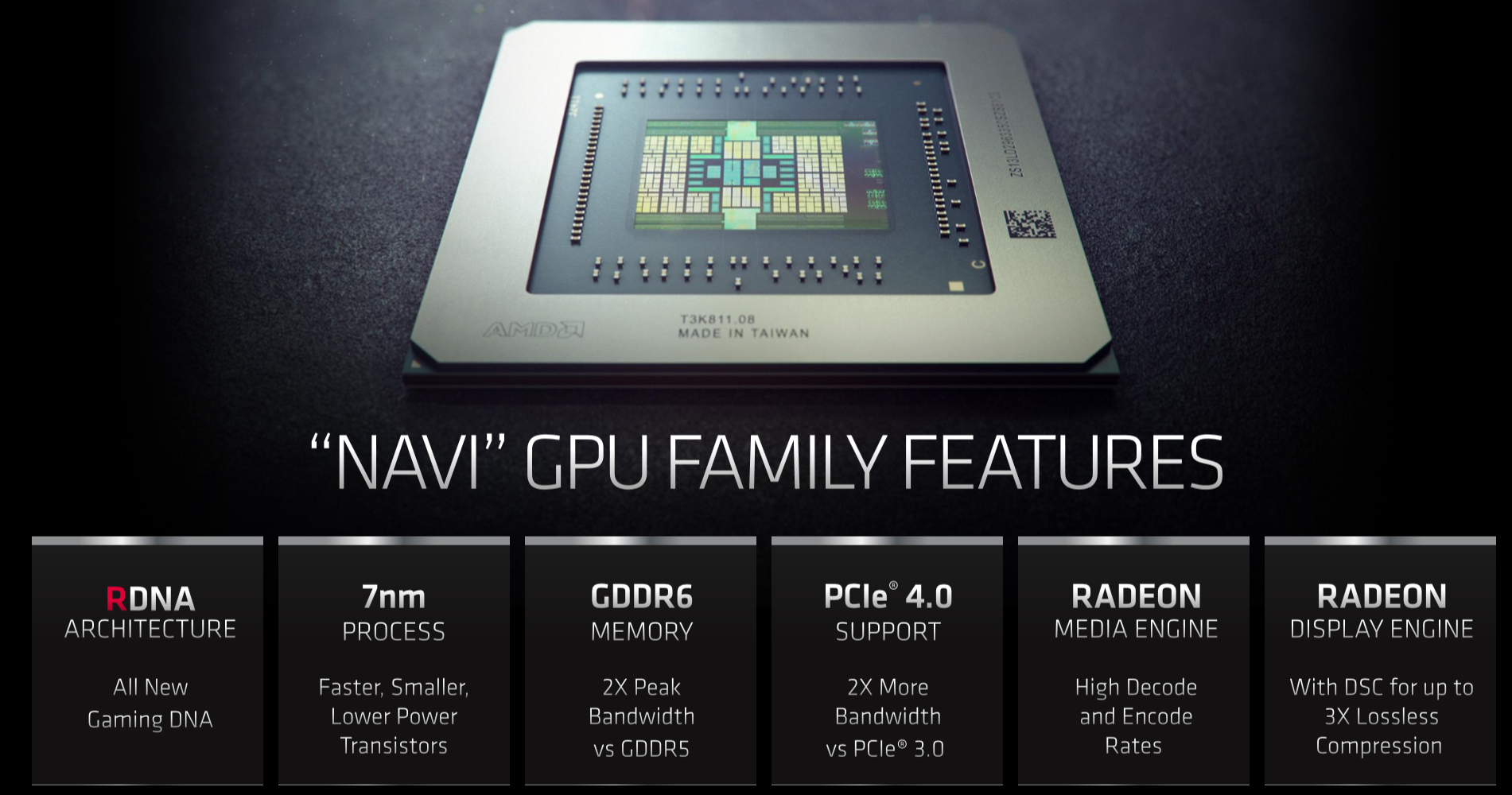
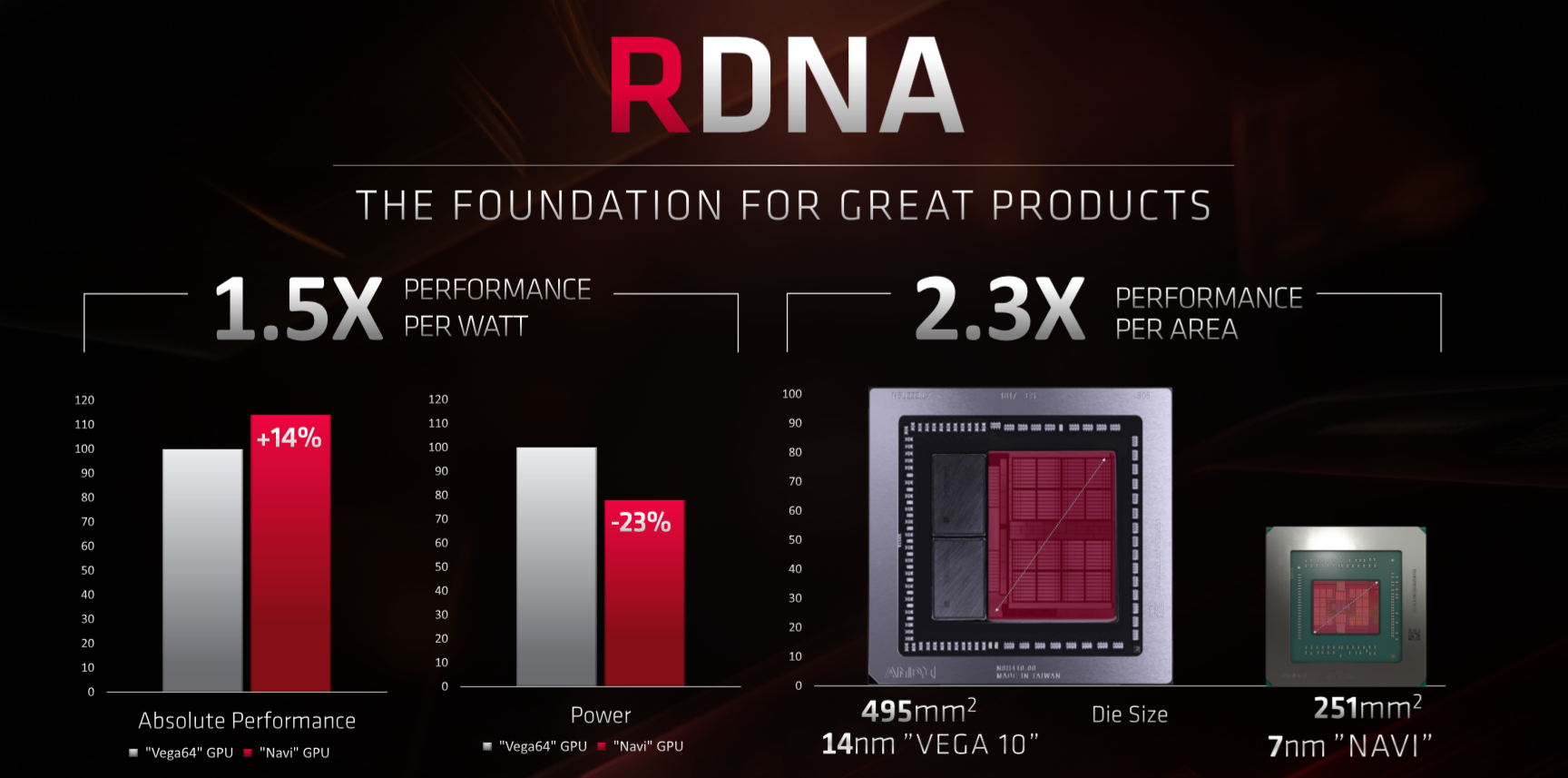
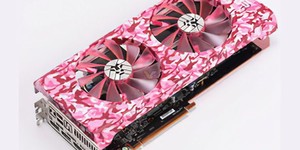
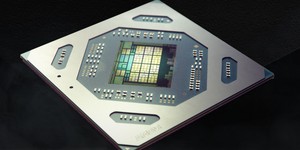
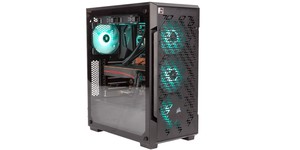




Want to comment? Please log in.